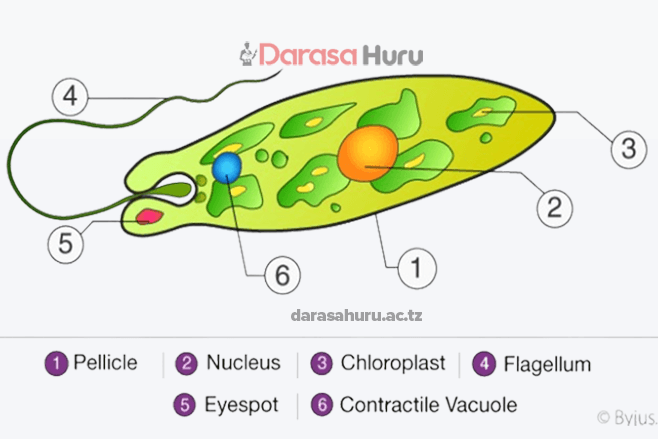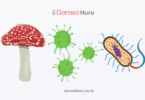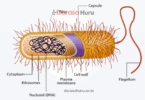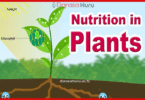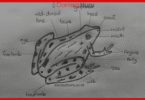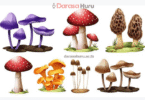Kingdom Protoctista Classes, Advantages and Disadvantages
Kingdom Protista includes animal-like (protozoa), plant-like (algae), and fungus-like (slime molds) protists, and its main advantage is its role in the food chain and oxygen production, while a major disadvantage is that some species are dangerous pathogens causing diseases like malaria
Members of this kingdom include Amoeba sp., Euglena sp., Plasmodium sp., Paramecium sp., and Trypanosoma sp.
Task 4
From the library and reliable internet sources, search information about protoctists (characteristics, advantages, and disadvantages).
Characteristics of protoctists
(a) They are eukaryotic as they have nucleus and other membrane bound organelles.
(b) Most of them are unicellular organisms.
(c) Most of them live in or near water, or in moist places.
(d) Some Protoctista are autotrophs (manufacture their own food) while others are heterotrophs (obtain nutrients from other organisms).
(e) They include mobile and sessile species.
(f) Some protectants reproduce sexually and others asexually while others reproduce both sexually and asexually.
(g) Many protoctists have locomotory structures, such as cilia, flagella or pseudopodia.
Phyla of kingdom Protoctista
Protoctista is subdivided into several phyla. Only five phyla of this kingdom will be described in this section. These phyla are Rhizopoda, Apicomplexa, Euglenophyta, Ciliophora, and Zoomastigina.
Phylum Rhizopoda
Organisms included in phylum Rhizopoda move and feed using structures known as pseudopodia (singular is pseudopodium). An example of organisms found in this phylum is Amoeba sp.
Parasitic amoeba includes Entamoeba histolytica, which feeds on cells of the human colon and cause amoebic dysentery. Free living amoeba are found in sea water, freshwater, and in the soil. They can also be found in muddy ponds and slow flowing streams containing decaying organic matter. A generalised structure of amoeba is shown in Figure

Characteristics of Amoeba
(a) Amoeba have two layers of cytoplasm; a viscous outer layer called ectoplasm and a more fluid internal layer called endoplasm.
(b) Most of them are free living, feeding on plant and animal matter. Others are parasitic in animals, including human beings.
(c) They have pseudopodia which are used for both locomotion and feeding, as shown in Figure

(d) They have contractile vacuoles which regulate the amount of water in the freshwater amoeba.
(e) They form temporary food vacuoles to hold and digest food particles.
(f) In amoeba, waste products, such as urea and ammonia are excreted by simple diffusion. Diffusion is the movement of substances from a region of high concentration to a region of low concentration. When there is a high concentration of urea or ammonia in the amoeba, these substances flow out of the amoeba into the surrounding water.
(g) In amoeba, oxygen and carbon dioxide gases are exchanged by diffusion.
(h) They are unicellular organisms.
(i) They reproduce asexually by binary fission, as shown in Figure

Task 5
Use reliable internet sources to view simulations and videos showing:
(a) Movement in amoeba
(b) Feeding in amoeba
(c) Asexual reproduction (binary fission) in amoeba
Advantage of amoeba
(a) Amoeba are commonly used in laboratories to study cell structure and function.
(b) Amoeba are important decomposers in aquatic environments, feeding on organic particles in the water.
Disadvantage of amoeba
Some species of Amoeba cause diseases. For example, Entamoeba histolytica causes amoebic dysentery in humans and Entamoeba gingivalis cause teeth and gum diseases.
Exercise 3
1. Imagine you are a scientist studying micro-organisms in a pond ecosystem. While examining a water sample under a microscope, you come across a single-celled organism with unique appearance. Describe the characteristics you would look for to determine whether this organism is a protoctists.
2. You are a medical researcher investigating an outbreak of amoebic dysentery in a community. You have collected samples from patients and identified the causative organism using a microscope. Describe the key characteristics of this organism that would help you confirm that the organism is the one responsible for causing amoebic dysentery.
3. Explain the advantages of amoeba.
Phylum Euglenophyta
This phylum consists of unicellular aquatic organisms most of which live in freshwater and possess flagella. Euglena sp.is an example of organisms found in this phylum. The following Figure shows the structure of Euglena sp.

Characteristics of Euglena sp.
(a) They are unicellular.
(b) They have chloroplasts which contain chlorophyll for photosynthesis.
(c) Most of them are found in freshwater; only a few are found in salt water.
(d) They are protected by pellicle, which surrounds the cytoplasm. The pellicle allows the euglena to change shape.
(e) They have flagella for movement.
(f) They have eye spot for detection of light intensity.
(g) They are eukaryotic cells.
(h) They possess both plant and animal characteristics. The plant characteristic is the possession of chloroplasts which contain chlorophyll for photosynthesis. The animal characteristics include ability to move using a flagellum, presence of an eyespot for detection of light intensity, and presence of gullet for ingesting food.

Advantages of Euglena sp.
(a) They are used for sewage treatment due to their heterotrophic mode of nutrition.
(b) Euglena sp. is an important source of food to aquatic organisms, such as fish.
(c) During photosynthesis, Euglena sp. produce oxygen gas. This oxygen is useful to aquatic organisms. It also helps to balance oxygen gas levels in sewage treatment plants.
Disadvantages of Euglena sp.
Euglena sp. blooms can be harmful to fish. The toxins produced by some Euglena species can kill fish and other aquatic organisms.

Phylum Apicomplexa
Organisms found in this phylum are unicellular and parasitic, Plasmodium sp. which cause malaria in humans is an example of members of phylum Apicomplexa.
Task 6
Search for videos that show characteristics of Plasmodium sp. from different reliable internet sources.
Characteristics of Plasmodium sp.
(a) They are unicellular.
(b) They are eukaryotes.
(c) They are parasites with a complex life cycle involving the host and the vector.
(d) They reproduce sexually in the human host and asexually by multiple fission in the mosquito vector and human host.
(e) When a plasmodium enters the human body, it attacks the red blood cells and liver cells.

Advantage of Plasmodium sp.
Plasmodium sp. is used in medical and other researches.
Disadvantage of Plasmodium sp.
Plasmodium parasites cause malaria. Malaria can cause inflammation and rupture of the spleen, and miscarriages. It can also cause anaemia due to the destruction of red blood cells. Severe malaria can cause death.
Phylum Ciliophora
Organisms found in this phylum are unicellular and are found in aquatic habitats. Paramecium sp. is an example of members of phylum Ciliophora. Figure 5.11 shows a structure of a Paramecium sp.

Characteristics of Paramecium sp.
(a) They are unicellular and slipper-shaped.
(b) They are eukaryotes.
(c) They are heterotrophic.
(d) They live in freshwater.
(e) The body is covered with short hairy structures called cilia.
(f) They use cilia to move and to create a feeding current.
(g) The body of the paramecium cell is enclosed by a stiff but elastic membrane, called the pellicle.
(h) Food enters the organism through an opening called the oral groove.
(i) They have food vacuoles which are formed to hold and digest food particles.
(j) They have anal pores which are used for elimination of undigested food.
(k) Paramecium sp. can reproduce either asexually or sexually, depending on their environmental conditions. Asexual reproduction takes place when enough nutrients are available, while sexual reproduction takes place under conditions of starvation.
(l) Contractile vacuoles regulate the amount of water in the cytoplasm.
Advantages of Paramecium sp.
Paramecium sp. play important ecological role in the environment as they help to clean up small particles of debris in the water as well as feeding on small animals.
Disadvantages of Paramecium sp.
(a) Some species of Paramecium invade and destroy the lining of the intestine, causing a disease called balantidiasis.
(b) Paramecium sp. feed on bacteria which decompose sewage. This may delay the decomposition of sewage.
Phylum Zoomastigina
Organisms found in this phylum are unicellular flagellate protoctists. Generally, they are found in the intestine, but can also be found in blood stream or in the heart. Trypanosoma sp. Is an example of members of phylum Zoomastigina. Figure 5.12 shows the structure of a Trypanosoma sp.

Characteristics of Trypanosoma sp.
(a) They are unicellular, slender, elongated, and dorsal ventrally flattened in shape.
(b) They are parasites in wild animals, domesticated animals, and human beings.
(c) Have a mass of mitochondrial DNA located near the mitochondrion in a structure called kinetoplast.
(d) The body is covered with a thin, elastic, and firm pellicle.
(e) Most of them reproduce asexually by binary fission while inside the host body.
(f) Some have an undulating membrane for locomotion.

Advantages of Trypanosoma sp.
Trypanosoma brucei has been extensively studied by scientists, as it is a model organism for understanding the biology of parasites and the diseases they cause. Research on Trypanosoma brucei has led to the development of new drugs and treatments for sleeping sickness and related diseases.
Disadvantages of Trypanosoma sp.
(a) Trypanosoma brucei is the causative agent of the disease called human African trypanosomiasis or sleeping sickness. The disease affects mostly African countries. It can be transmitted through bites of a vector called tsetse fly or through blood contact from an infected individual.
(b) Trypanosoma sp. also cause animal trypanosomiasis or Nagana to cattle, buffalos and other large herbivores.
Exercise 4
1. Imagine you are on the field trip to a stagnant water body for your Biology class. Your teacher asks you to collect water samples for microscopic investigation from two different locations in the pond, one near the surface and the other from the bottom.
During microscopic examinations you observed presence of Euglena sp. From the surface sample and Paramecium sp. from the bottom sample. Describe the characteristics of the micro-organisms observed from the samples.
2. You are given a microscope and a slide with a sample of Trypanosoma sp. to observe in your Biology class. While looking at the slide under the microscope, your teacher asks you to describe the key characteristics of Trypanosoma sp. that you can observe. What features would you look for to explain the characteristics of the sample?
Activity 2
Investigating different protoctists
Materials
Specimen bottles, microscope, microscope slides and coverslips, pond water, a notebook, and a pencil
Procedure
1. Go to a pond or any other place with stagnant water.
Caution
Care must be taken when collecting water samples from the pond.
2. Fetch water from the pond using specimen bottles.
3. In the Biology laboratory, put a drop of the pond water on a microscope slide, add stain and cover it with a coverslip.
4. Observe the slide under the microscope. Do you identify any organisms? If Yes, name them.
Advantages of Kingdom Protista
Oxygen production: Plant-like protists, such as diatoms and algae, produce a significant portion of the Earth’s oxygen through photosynthesis.
Food chain importance: They form a critical part of aquatic food webs, serving as a food source for many animals.
Decomposition and nutrient cycling: Many protists act as decomposers, recycling essential nutrients in ecosystems.
Symbiotic relationships: Some protists have symbiotic relationships with other organisms, which can be mutually beneficial.
Nutrient source: Some protozoa are a good source of nutrients required by the human body.
Water purification: Some protists help clean water.
Disadvantages of Kingdom Protista
Pathogens: Some protists are pathogens that cause serious and sometimes fatal diseases in humans, animals, and plants, such as the Plasmodium parasite that causes malaria.
Harmful algal blooms: Certain protists, like dinoflagellates, can form toxic algal blooms that deplete oxygen and harm other marine life.
Parasites: Some protists act as parasites and carriers of dangerous viruses, spreading illness.
Ecological disruption: Harmful blooms and other activities can disrupt aquatic ecosystems.

